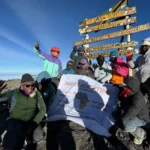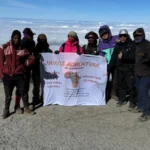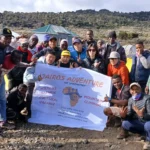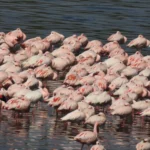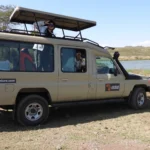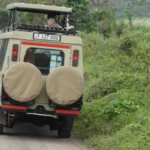Masai Mara
The Masai Mara National Reserve is located in the Great Rift Valley in Kenya and consists mainly of open grassland. It borders the Serengeti National Park and together they host Africa’s best known wonder – the annual great migration. The name Masai Mara was chosen in honor of the Maasai people.
Masai Mara Climate
In the dry season from June to November and February and March, temperatures can be high during the day (30°C). In the rainy season from November through May, with peak rainfall in December-January and April-May, temperatures often drop to 20°C. It normally doesn’t rain throughout the day as one sees sunny mornings with rain clouds building up towards the afternoons and evenings.
Getting there
The Masai Mara is a 45 minutes flight away from Kenya’s capital Nairobi. There are several airstrips which are serving the different areas of the Masai Mara.
It is not easy to reach Masai Mara from Tanzania because there is no custom office nearby.
The Wildebeest Migration
The Serengeti-Mara ecosystem is where 2.5 million wildebeest, zebras and gazelles follow the rains in search of new grass every year. They make their way from Serengeti National Park (in northern Tanzania) to the Masai Mara, and they usually cross into Kenya in July or August. Although the timing is never guaranteed, August and September are when you’re most likely to see the herds undertaking the famous crossings of the Mara River in Kenya. They slowly head back into the Serengeti around October.
Wildlife
The Masai Mara is one of the best parks in Africa for seeing big cats, especially lions. Even leopards are quite used to vehicles and you can see their natural behavior, while cheetahs inhabit the open savannah, hunting or seeking their next meal. Of the other Big Five, elephant and buffalo are also plentiful, but black rhino is trickier and they only roam in the Mara Triangle area.
Scenery
Grassland savannah dominates the landscape in the Masai Mara, but there are pockets of acacia woodland and riparian forest around the Mara River, and rocky hills intersperse the plains. The Maasai word ‘Mara’, meaning spotted, refers to these dots in the landscape. In the north, the Oloololo Escarpment (also called the Siria Escarpment) marks the northern boundary of the Mara. The stunning views from the top take in the whole ecosystem.
Activities
The main activity on organized safaris is guided game drives. East of the Mara River, dozens of vehicles frequently gather around big cat sightings. Crowding is less common in the Mara Triangle and forbidden in most conservancies. Early morning hot-air balloon rides are justifiably very popular. Night drives and walking safaris are forbidden within the national reserve, but they are usually offered in the conservancies. Self-guided game drives are permitted in the Mara Triangle but not in the conservancies. In June 2024, the reserve authorities placed a ban on self-drive activities east of the Mara River; at the time of writing this is not being enforced, but that might change.











